As I have been processing the Ken White materials, I have come across several items that needed conservation treatment. Fortunately, my intern for the summer, Erin Cunningham, just graduated this past spring from the University of Delaware with her B.A. in both Art Conservation and Art History. This summer, she has been working with Hagley’s Library Conservator, Laura Wahl, on the treatment of various items, as well as the special housing needs of numerous other collection materials.
There were several framed items, which Erin carefully removed from their frames and then consulted with Laura on their treatment. Some of these were awards which White won for various projects he had designed. Three awards were from Institutions Magazine which annually awarded “Outstanding Institutions Interiors.” A 1955 award was for White’s University of Iowa Memorial Student Union design, which he completed the same year. A photograph of the lobby of the Student Union was among the framed items.
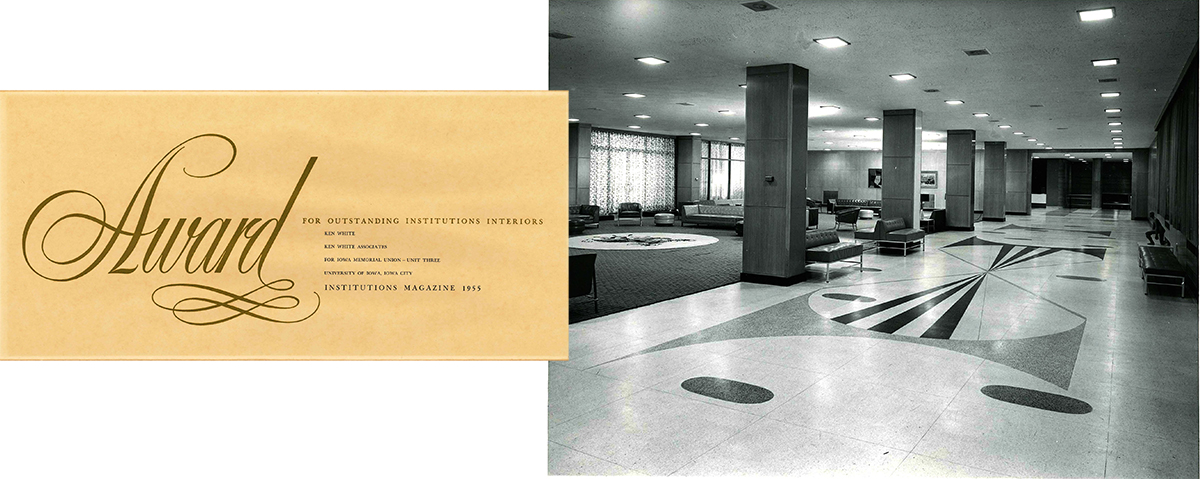
Right – The lounge area of the Iowa Memorial Union. Notice the distinctive pattern in the terrazzo floor in the foreground – a Ken White design
There were also other framed items of White’s other projects dating back to the late 1940s. Among the other items was this drawing on black mat board of a design for a car. Luckily, this drawing was in good condition and only required the frame removed and a quick surface cleaning.
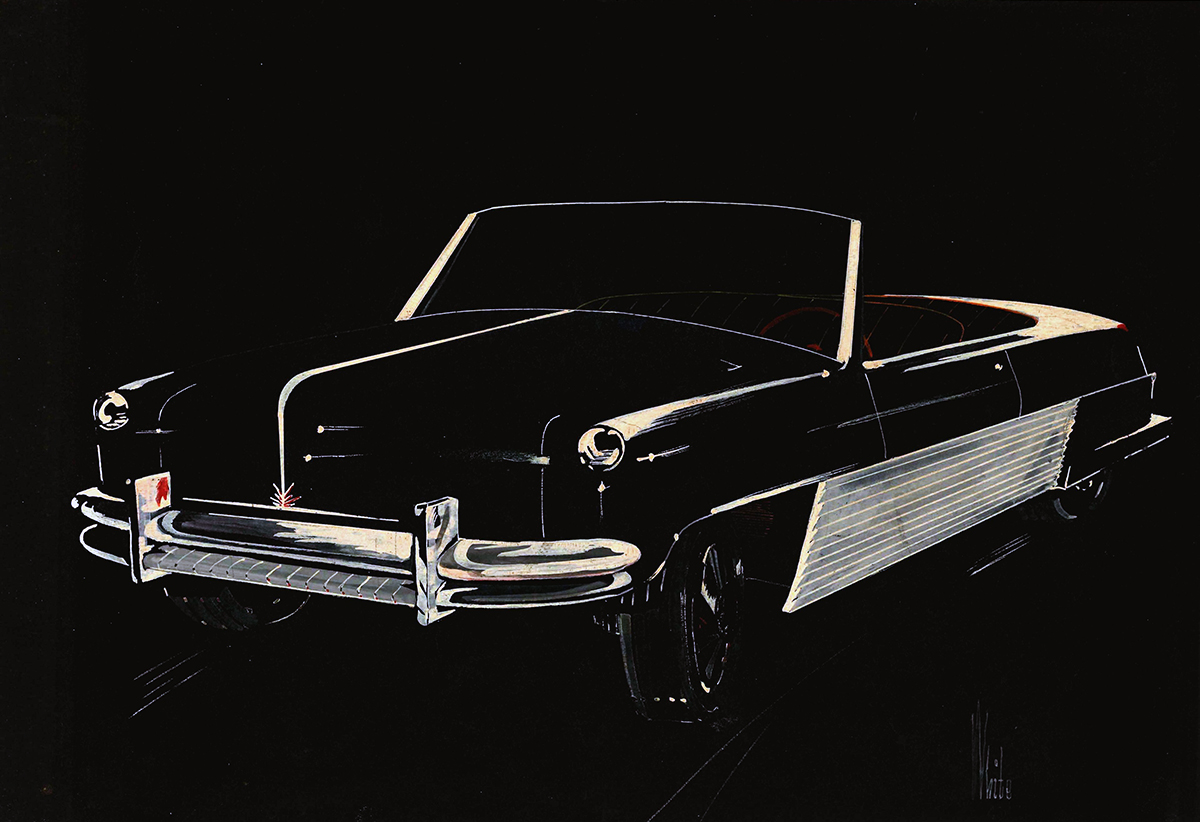
Here is another example of White’s photographs of one of his projects and the mount he created for it. It is of a women’s shoe department in an unidentified store which dates to the late 1940s. The photograph had been cut into a trapezoid shape and mounted with glue on matboard which had been painted green. When framed, only the green showed around the photo.
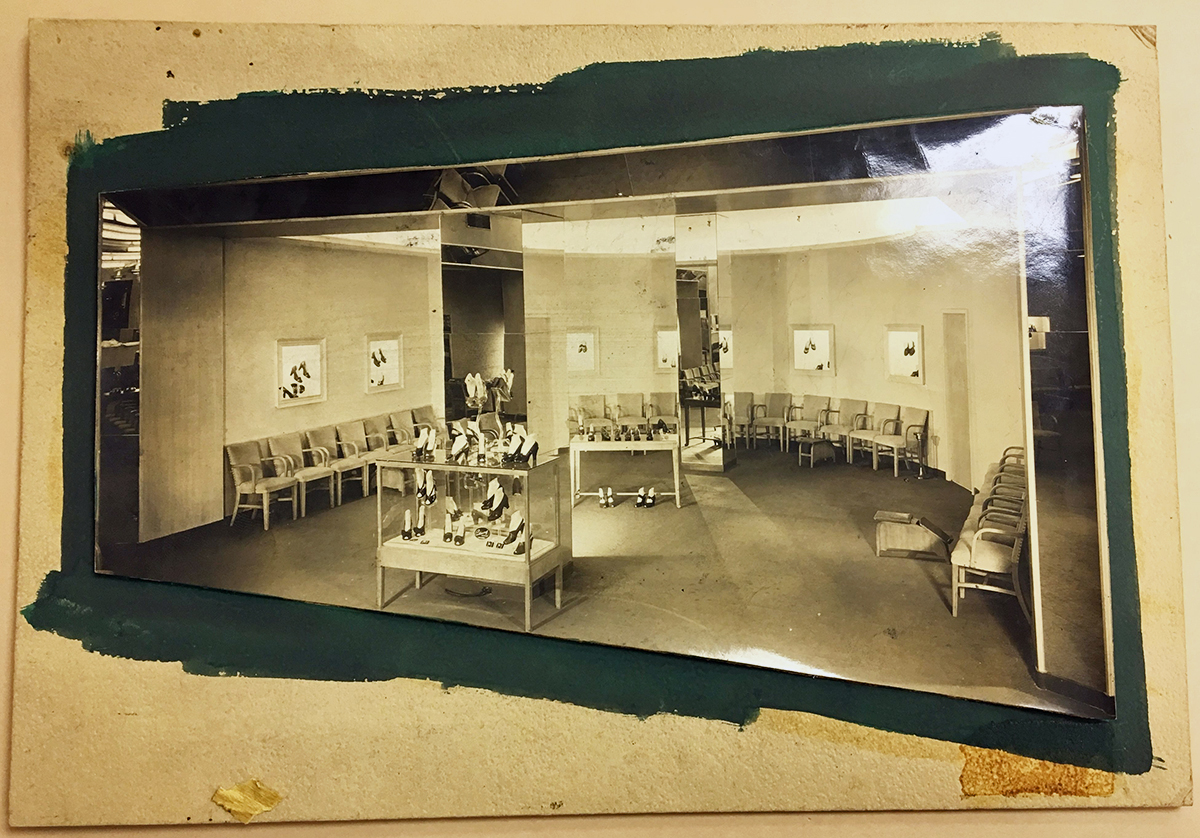
The photograph, and its accompanying mount, had a significant amount of surface grime. Erin was able to do the following to improve the objects condition:
A heavy campaign of surface cleaning was needed before any other condition issues could be addressed. Once the surface grime was reduced, a solution of 50:50 water and ethanol was applied locally with a cotton swab. This addressed accretions and stubborn areas of grime. The photograph and mount had previously been attached fully with an unknown adhesive, but over time, this adhesive failed, leaving them detached from one another. It was a high priority to reduce the adhesive on the back of the photograph, as there is a risk of it migrating through the paper over time and effecting the image. The adhesive was first reduced with the use of a gel made from Klucel G and ethanol. The remaining reduction was accomplished with a poultice made from fullers earth, a dry powder-like clay, and a 50:50 solution of acetone and ethanol. The mount, made from acidic wood pulp, has the potential of affecting the photograph’s condition over time, so a decision was made to store the two together with special attention to keeping them from coming into contact with each other.
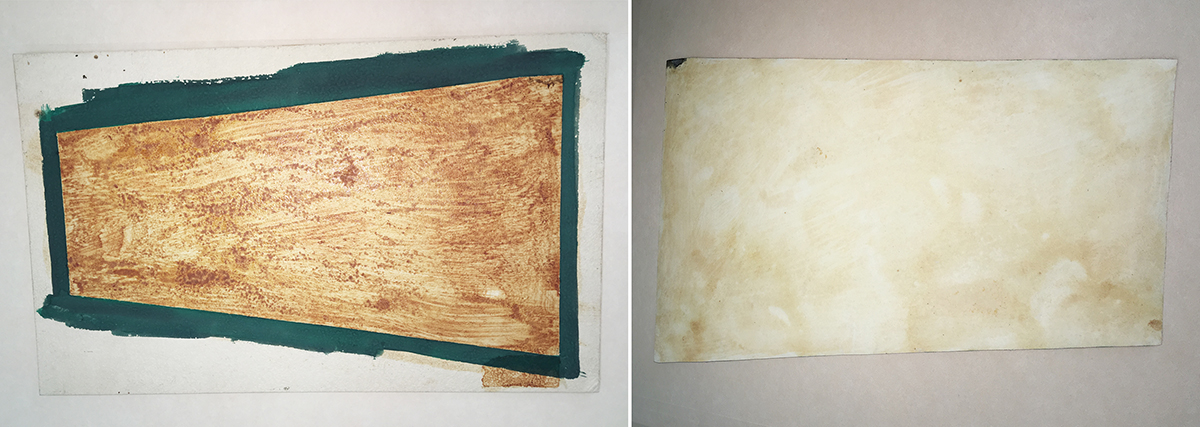
Right – The reverse of the photograph after treatment
Other collection items included special watercolor and pastel elevations - beautiful works of art - completed for some of White’s projects. Works that included the use of a pastel medium were given special attention, because pastel is a fugitive medium and can be disrupted when anything comes in contact with its surface. For this reason, Erin created custom sink mats. The mats allow for each work to be properly housed without storage materials coming in contact with its surface.
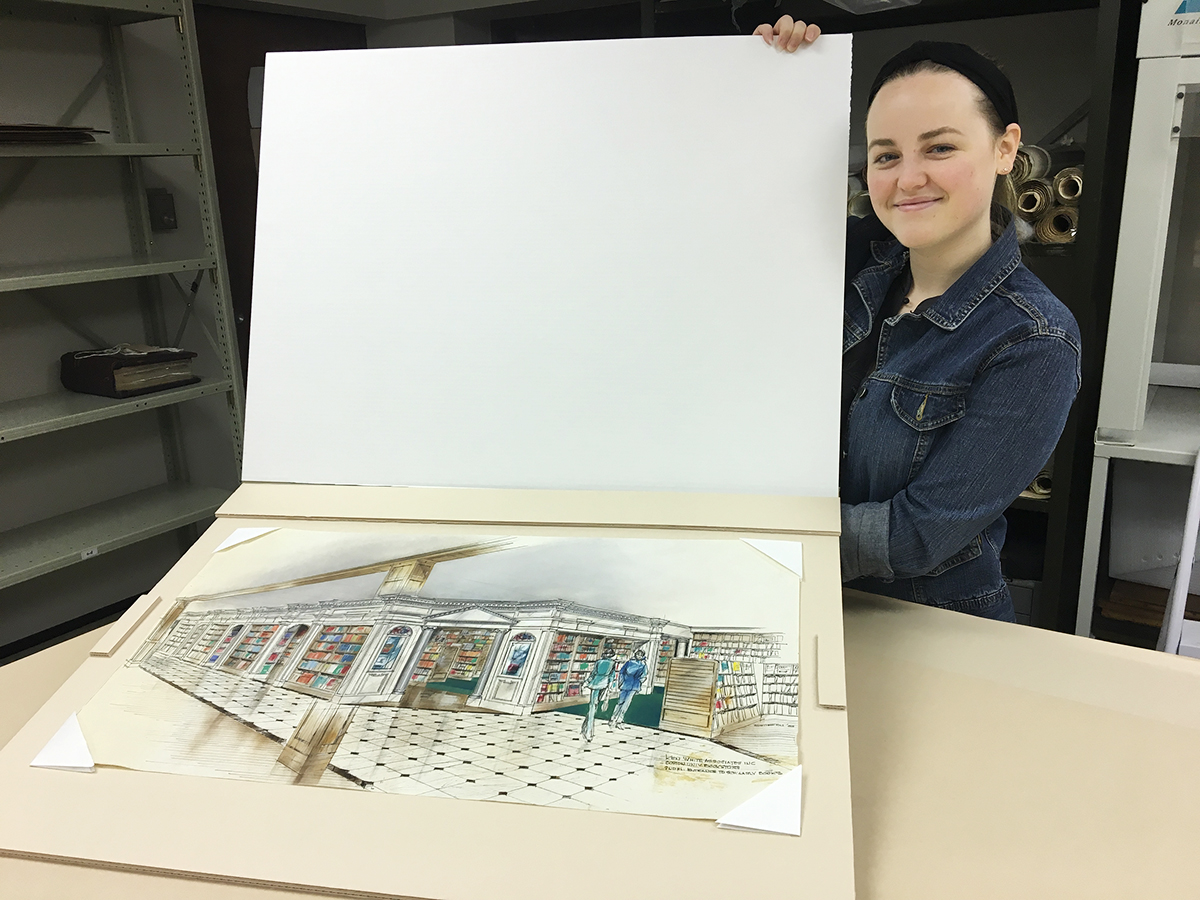
With the wide variety of materials in the Ken White Collection that needed conservation treatment and special housings, Hagley has been very fortunate to have Erin as the Project intern this summer.
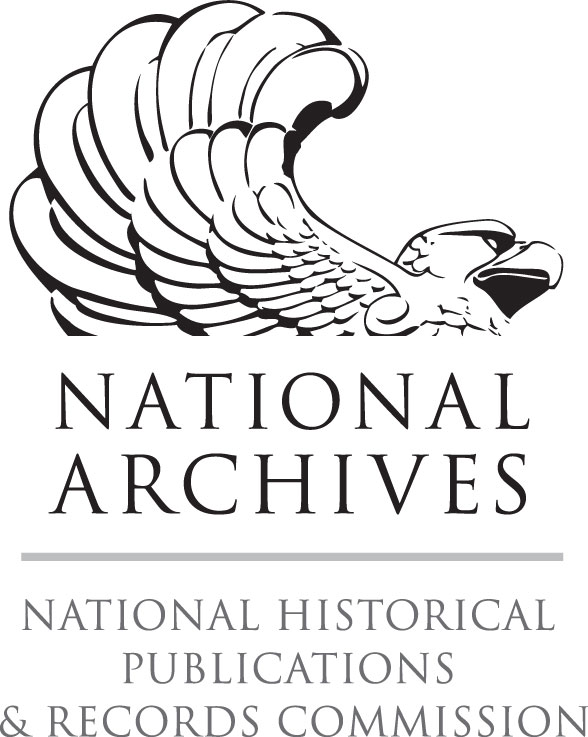
Gail Stanislow is a Project Archivist at Hagley Museum and Library.
